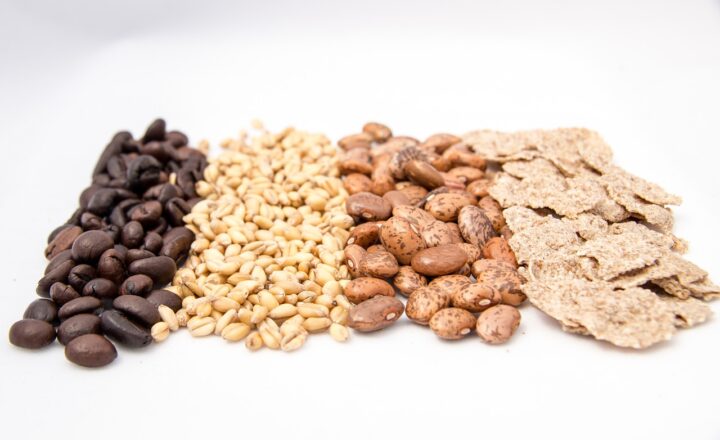How Black Licorice Became a Polarizing Food: Love It or Hate It?
November 13, 2024

Black licorice has long been a contentious topic among candy lovers. Some adore its distinct flavor and enjoy it in all its forms, while others can’t stand its taste. In this article, we’ll delve into the history, cultural significance, health benefits, and controversies surrounding black licorice to understand better why this unique confection has become a polarizing food.
1. The Origins of Black Licorice
The roots of black licorice trace back to ancient Egypt, where it was enjoyed in the form of a drink. It was made from the root of the Glycyrrhiza glabra plant, commonly known as the licorice plant. The sweetness of this root comes from a compound called glycyrrhizin, which is about 50 times sweeter than sugar.
Black licorice was not only a treat but also held medicinal properties. Ancient Greeks, Romans, and even Chinese civilizations used it to treat various ailments, from coughs to digestive issues. Its popularity bloomed in the Middle Ages when it was often added to cough syrups and tonics.
As black licorice made its way through Europe, it became a staple in countries like the Netherlands and Finland, where it is enjoyed in various forms today, including salty licorice (salmiakki).
2. The Unique Flavor Profile: Why People Love or Hate It
The flavor of black licorice is unique and difficult to categorize. It possesses a sweet yet slightly bitter profile, with hints of anise and earthy notes. For aficionados, this complexity makes black licorice irresistible, evoking nostalgic memories of childhood specifically tied to family traditions and cultural practices.
On the flip side, the very same flavors that charm enthusiasts can be off-putting to others. Many find the taste too strong or simply dislike the herbal elements reminiscent of medicinal flavors. Research in the field of taste perception suggests that a person’s preference for black licorice may be linked to genetics. Some individuals have taste receptors that find the compound anise, which mainly gives the distinct flavor to licorice, more palatable than others.
In marketing and consumer culture, this divergence of opinion has manifested in polarizing debates, with some people proudly identifying as licorice lovers while others vehemently oppose it. Products with black licorice flavoring have become divisive in candy aisles worldwide, and this phenomenon has sparked social discussions and debates about food preferences.
3. Cultural Variation and Licorice in Different Countries
Different cultures view black licorice through various lenses. In Scandinavia, salty licorice is prevalent and often consumed as a snack. It is not uncommon to find products flavored with ammonium chloride, which enhances the salty profile. This version is often met with skepticism from those unaccustomed to its taste, leading to varying reactions even within communities.
In contrast, black licorice remains a deeply cherished confection in Italy, where it is often found in blends such as “liquorice allsorts,” incorporating various textures and tastes. In the United States, brands like Red Vines and Twizzlers have largely overshadowed traditional black licorice offerings, resulting in a decline in its popularity among younger generations.
Despite its controversial standing, the versatility of black licorice in culinary contexts—from cocktails to baked goods—demonstrates its unique allure. Innovative chefs and mixologists experiment with black licorice to elevate flavors, showcasing its ability to bridge traditional and modern cuisine.
4. Health Benefits and Concerns
Black licorice isn’t just a candy; it also boasts various health benefits when consumed in moderation. Glycyrrhizin contains anti-inflammatory properties, and licorice roots are known for their ability to soothe digestive discomfort. Moreover, traditional herbal medicine has used it to alleviate symptoms of respiratory ailments, making it a theoretical superfood.
However, excessive consumption of black licorice can lead to health issues. The glycyrrhizin in black licorice can cause potassium levels to drop, leading to complications such as high blood pressure, heart problems, and even hormone-related issues. The FDA has warned against overindulgence in black licorice, particularly among individuals with pre-existing health conditions.
The dialogue surrounding health has further polarized black licorice enthusiasts and critics. While many appreciate its potential health benefits, others highlight the risks, leading to calls for more balanced consumption practices.
5. Black Licorice in Pop Culture
Black licorice’s polarizing nature has made it a fascinating subject in pop culture. It has been featured in movies, TV shows, and even social media memes, often highlighting people’s strong reactions to it. These representations both affirm and challenge the love/hate relationship with black licorice, adding to its mystique.
In the world of candy contests and food challenges, black licorice often finds itself pitted against sweeter competitors, serving as a test for intrepid foodies and sweet lovers. The humor and drama surrounding these experiences showcase the extremes of perceptions surrounding black licorice.
In culinary shows, chefs often incorporate black licorice into modern dishes, stimulating conversations about how legacy ingredients can harmonize with culinary innovation. As such, black licorice continues to hold a position at the intersection of tradition and modernity.
Conclusion: Love It or Hate It
At its core, black licorice remains a polarizing confection that surprises and divides people’s opinions. Whether loved for its depth of flavor or reviled for the very same reasons, its history, cultural significance, and culinary versatility secure a permanent place in the world of gastronomy.
As food preferences evolve over time and generations, black licorice stands as a reminder that culinary experiences are subjective. Food can incite passion, debate, and nostalgia, thereby solidifying its status as a beloved or hated treat among many. Next time you encounter black licorice, consider the conversations, cultural practices, and histories behind this polarizing treat, as it continues to challenge our perceptions of flavor and enjoyment in food.








